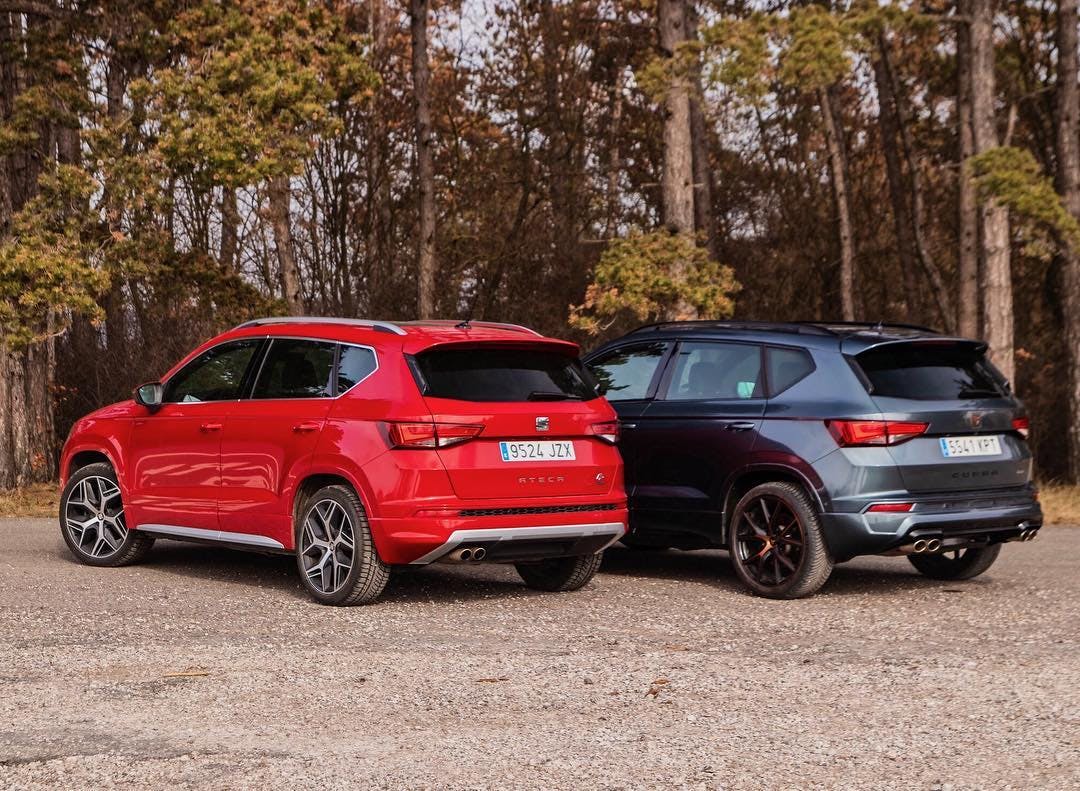What’s the Difference Between SEAT and CUPRA? (And How It All Started)

If you’re a fan of Spanish cars, you’ve probably noticed the growing buzz around the CUPRA brand. Once just a badge on SEAT’s sportier models, CUPRA has since evolved into its own standalone marque — but what does that really mean? Are SEAT and CUPRA still connected? How did they come to be?
As someone who’s spent years working under the hood of both SEAT and CUPRA vehicles — and driving them through the backroads of Spain — I’ve seen the evolution firsthand. Let’s dive deep into the history, differences, and what it all means for you as an owner or enthusiast.
The Origins of SEAT: A Proud Spanish Legacy
SEAT (short for Sociedad Española de Automóviles de Turismo) was founded back in 1950. Spain, coming out of difficult post-war years, needed a homegrown car industry to modernize the country. In collaboration with Fiat, SEAT began producing affordable cars for Spanish families — cars like the SEAT 600, which quickly became a national symbol of progress and independence.
For much of its early life, SEAT vehicles were largely based on Fiat designs, but the company steadily gained its own engineering identity. After their partnership with Fiat ended in the early 1980s, SEAT began a new chapter by joining the Volkswagen Group in 1986 — a pivotal move that would set the stage for the SEAT we know today.
By the late 1990s and early 2000s, SEAT had developed a reputation for producing stylish, affordable, and fun-to-drive cars with a sporty edge — cars like the Ibiza, León, and Altea became staples across Europe.
CUPRA: From Performance Sub-Brand to Standalone Star
CUPRA started life in the late 1990s as SEAT’s performance division. The name itself is a fusion of "Cup Racing," highlighting its motorsport heritage. Models like the Ibiza CUPRA and León CUPRA offered hot-hatch performance for everyday drivers — often punching well above their weight class in terms of value and speed.
As SEAT’s reputation for sporty, youthful cars grew, so too did the cachet of the CUPRA badge. It symbolized high-performance, sharp styling, and a sense of rebellious fun.
Then in 2018, everything changed: CUPRA was officially spun off into its own brand under the Volkswagen Group umbrella.
CUPRA is now its own entity, distinct from SEAT — though it still shares certain resources, technologies, and manufacturing facilities with its parent.
The Key Differences Between SEAT and CUPRA Today
Now that CUPRA is standing on its own, how do the two brands actually differ?
Here’s a quick breakdown:
- Brand Identity
- SEAT: Youthful, affordable, sporty everyday cars
- CUPRA: Premium performance, distinctive design, sporty luxury
- Target Market
- SEAT: Broad mainstream audience (families, young drivers)
- CUPRA: Enthusiasts seeking performance, style, and exclusivity
- Price Range
- SEAT: Affordable
- CUPRA: Premium
- Performance Focus
- SEAT: Sporty trims available (such as FR versions)
- CUPRA: High-performance engineering as standard
- Design Language
- SEAT: Sharp, modern, but relatively understated
- CUPRA: Bold, aggressive, and exclusive aesthetics
- Independent Models
- SEAT: No — SEAT builds regular models across various categories
- CUPRA: Yes — CUPRA develops unique models like the Formentor and Born
Essentially, SEAT builds solid, stylish cars for the masses, while CUPRA builds performance-first premium cars for enthusiasts.
A Look at the Models
SEAT Lineup (Recent Examples):
- Ibiza
- Arona
- Ateca
- León
- Tarraco
These cars are known for their reliability, affordability, and sporty character without being full-blown performance machines.
CUPRA Lineup:
- CUPRA Formentor (brand-exclusive model — not a SEAT variant)
- CUPRA León (based on SEAT León but reworked significantly)
- CUPRA Ateca (based on SEAT Ateca but heavily tuned)
- CUPRA Born (fully electric hatchback)
Notice something important: the Formentor and the Born are standalone CUPRA designs — meaning they have no direct SEAT equivalent. This move solidifies CUPRA’s intent to be seen not as a tuning arm of SEAT, but as a true standalone performance brand.
Shared DNA (But Different Personalities)
Even though CUPRA is independent, it still benefits from SEAT and Volkswagen Group technology.
For example:
- Many SEAT and CUPRA cars use the MQB platform (the same used in VW Golf).
- Engines are often shared but tuned differently (for example, the 2.0L TSI engine).
- Infotainment systems, electronics, and safety tech often overlap.
The real difference is how CUPRA tunes, styles, and positions their cars. A CUPRA León might share bones with a SEAT León, but the suspension, engine mapping, exhaust system, and interior appointments are all given the premium performance treatment.
A Brief Timeline of Key Moments
- 1950 - SEAT founded in Spain
- 1986 - SEAT joins Volkswagen Group
- 1996 - First SEAT Ibiza CUPRA launched
- 2002 - SEAT León CUPRA R becomes a cult classic
- 2018 - CUPRA becomes a standalone brand
- 2020 - CUPRA Formentor unveiled (first standalone CUPRA model)
- 2021 - CUPRA Born debuts as first all-electric model
Why Volkswagen Group Created a Separate CUPRA Brand
You might wonder: why split it off at all?
The simple reason: to compete in the growing premium performance market without diluting SEAT’s more affordable positioning.
Volkswagen Group already manages a family of brands aimed at different niches:
- Volkswagen = Everyday quality
- Audi = Premium luxury
- Skoda = Value and practicality
- Porsche = Sports performance
With CUPRA, VW can now target buyers who want something sportier and edgier than Audi, but more premium and individualistic than Volkswagen — especially in younger markets like southern Europe.
And it's working: CUPRA sales have skyrocketed year-on-year since the brand’s launch.
What the Future Holds for SEAT and CUPRA
Interestingly, SEAT as a brand is shifting more toward urban mobility (electric scooters, compact EVs) while CUPRA will continue leading the charge on sporty electric vehicles.
In fact, future CUPRA models like the Tavascan (an electric SUV-coupe) and UrbanRebel (compact EV) are already redefining what Spanish performance looks like in the EV era.
It’s an exciting time to be a CUPRA fan — and as someone who loves the visceral connection between driver and machine, I can't wait to see how CUPRA keeps blending electrification with performance DNA.
Final Thoughts
In short:
- SEAT builds great all-around cars with sporty flair at a price that makes sense for most families.
- CUPRA builds premium, high-performance machines with a rebellious spirit and unique design.
They’re two sides of the same coin, each appealing to different drivers. And whether you’re behind the wheel of a SEAT Ibiza or a CUPRA Formentor, you’re part of a proud Spanish automotive legacy.
If you want that little bit more excitement, style, and exclusivity?
Well, CUPRA is waiting for you.

Tom Martinez
Tom Martinez is a lifelong car enthusiast with over a decade of hands-on experience working with SEAT and CUPRA vehicles. As the founder and lead writer at SEAT CUPRA Guide, Tom shares practical DIY tutorials, maintenance advice, and performance tips to help SEAT and CUPRA owners get the best out of their cars. When he's not under the hood or testing the latest upgrades, you’ll find him cruising the backroads of Spain in his CUPRA Formentor.
